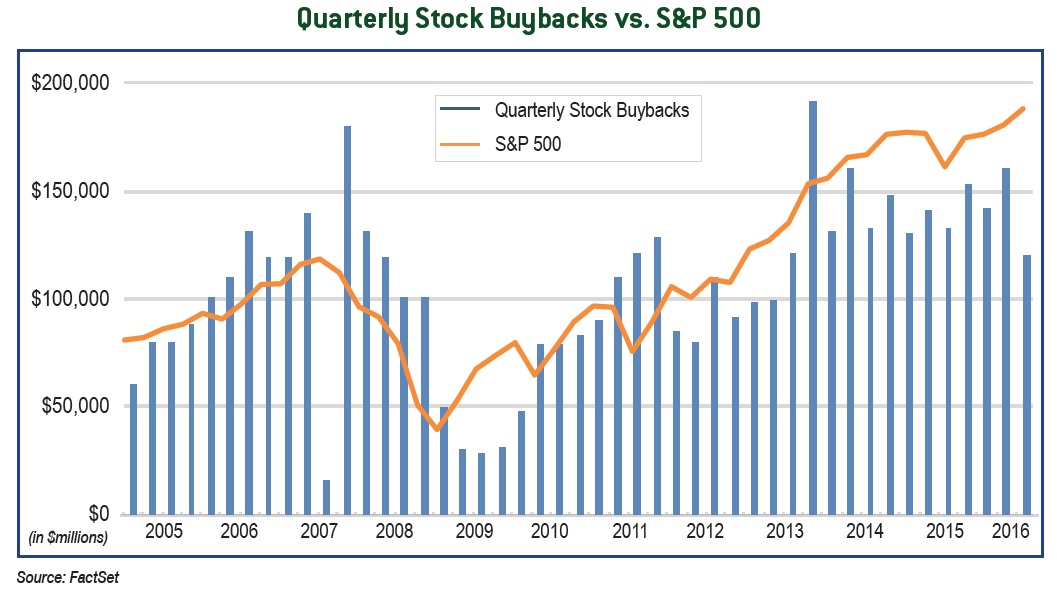A Return to Capitalism or Just a Return of Capital?
by Rick Rubin
The U.S. economy has grown for seven consecutive years since the Great Recession ended in 2009, marking one of our country’s longest economic expansions ever. It’s reasonable to conclude that this level of growth would have satisfied investors, workers, retirees and politicians alike. Unfortunately it hasn’t, due to factors like record low interest rates weighing on savers and retirees, as well as growing income and wealth inequality. In general, individuals at the top of the income scale have enjoyed higher real wage growth as compared to the rest of workers. In fact, real median U.S. household income peaked in 1999 and remains well below that level today. The struggle of the middle class has given rise to populist messengers… enter Donald Trump and Bernie Sanders.
We believe that U.S. investors have fared well given the challenges of uneven global growth, a strong U.S. dollar, and declining corporate profits. After all, investment returns have been strong since the financial crisis ended, with the S&P 500 and Dow Jones Industrial Average Indexes reaching all-time record highs in August. What accounted for the disparity between positive investment returns and consistently sub par economic growth? In our opinion, corporate capital allocation decisions have been, and may continue to be, a significant driver of both.
Public companies have a fiduciary responsibility to maximize shareholder returns. The management team decides how to allocate profits and what level to reinvest back into the business. For example, companies may increase capital spending (plants and equipment), raise workers’ wages, and step up hiring. Such investments should boost future profit growth and the economy over time. Unfortunately, many companies are holding off on long-term investments because of deep scars from the financial crisis. Instead, managements have increasingly selected a “safe path” by returning profits to shareholders through stock buybacks and dividends. Stock buybacks rose to $561 billion in 2015, a 40% increase from the prior year and the highest since 2007’s $721 billion.
At Tufton Capital Management, we are value investors, and we believe dividends and share buybacks are crucial to an investor’s returns. However, we believe many companies have relied too heavily on buybacks and dividends and have underinvested in their businesses, reducing growth prospects. How did we get here? Stock buybacks reduce the number of shares on the market and increase a company’s earnings per share (EPS) without the risk inherent in a new project. Further, companies are happy to leverage the balance sheet with cheap debt used to buy back more stock. Buybacks were a great use of cash when stock prices traded at a discount coming out of the financial crisis. But the market appears fully valued now, and there should be better uses of capital available to many companies.
In our view, company buybacks are a main source of the current demand for U.S. stocks. Buybacks have provided support for stock prices in the face of weak global growth and five consecutive quarters of year-over-year EPS declines for S&P 500 companies. Fortunately, stock buybacks have started to slow. Quarterly buybacks declined nearly 7% in 2Q 2016– the smallest quarterly buyback amount since 3Q 2013. We believe it’s time for companies to move away from stock buybacks and to start reinvesting in their business for long-term growth!




